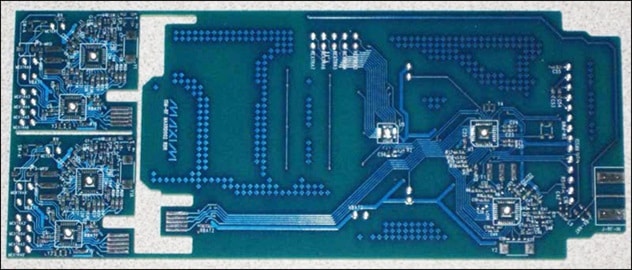Its preprogrammed demonstration capabilities and flexible design options make it ideal for evaluating AMR systems while supporting innovative customizations.

The MAX7032 transceiver reference design (RD) from Analog Devices, designated as RD-LFRD002, is an advanced evaluation platform designed to facilitate wireless Automatic Meter Reading (AMR) systems. This reference design benefits engineers, system integrators, and researchers in the utility and IoT sectors who aim to implement, evaluate, or enhance AMR technologies. By leveraging this design, users can expedite the development and testing of wireless communication between utility meters and reading devices, contributing to efficient energy management and streamlined utility operations.
The reference design is a self-contained solution comprising two main components: the meter board (MTR) and the reader board (RDR). These are configured to simulate a simple wireless AMR system, where the MTR acts as a slave (meter) and the RDR as a master (reader). Both boards are powered by the MAXQ610 microcontroller and employ the MAX7032 transceiver for wireless communication. Programming these boards is made easy with the Maxim USB-to-JTAG board (MAXQJTAG-USB), allowing end users to customize the firmware for specific applications.
The meter board (MTR) is designed for compact integration, featuring a transceiver, microcontroller, and multiple input ports for various meter types. It supports six configurable ports, with the primary interface accommodating pulse or dry contact (reed) output meters. The MTR operates on a 3V power supply, compatible with a range of voltage inputs (1.7V to 3.6V for the MAXQ610 and 2.1V to 3.6V for the MAX7032). Two antenna configurations are available: one with a built-in PCB antenna for space-saving applications and another with an external antenna option for enhanced signal reach.
The reader board (RDR) offers user-friendly features, including seven menu keys, a reset switch, a 102 x 64-pixel LCD display with multicolor LED backlighting, and a Receive Signal Indicator (RSI) LED. It is designed to fit within a Series 55 BOX enclosure and supports both an edge-connected antenna and a PCB trace antenna. These features ensure versatility in deployment environments.
Both the meter and reader boards are preprogrammed with firmware that demonstrates wireless AMR functionality, streamlining the initial testing process. Additionally, Gerber files and component parts lists are included, simplifying the replication or adaptation of the design for custom implementations. The proven PCB layout and free MAXQ microcontroller programming tools further enhance its utility for rapid prototyping and evaluation. With its robust features and extensive documentation, the MAX7032 reference design is an invaluable tool for those developing wireless metering solutions.
Analog Devices has tested this reference design. It comes with a bill of materials (BOM), schematics, assembly drawing, printed circuit board (PCB) layout, and more. The company’s website has additional data about the reference design. To read more about this reference design, click here.






